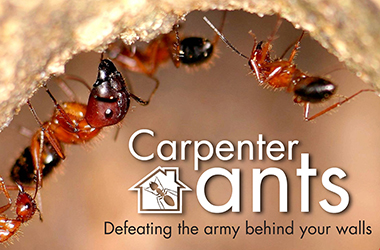
Ant Facts
There are more than 10,000 ant species that occur worldwide however only about 25 species commonly infest homes. Ants will eat practically any kind of food, but are especially attracted to sweets. Ants can live from several weeks to several years. Depending on the species, ants can range in size from 0.25 cm to 2.54 cm
Ants are close relatives of bees and wasps and can by identified by their three distinct body regions: head, thorax and abdomen. They can also be identified by their elbowed antennae, large heads, and powerful jaws.
There are also winged ants that are often mistaken for winged termites. Both winged ants and winged termites will leave their nests in droves in warm weather to mate and establish new colonies. Both species will lose their wings shortly after their flights. You can tell the difference between ants and termites because ants have a narrow “waist” between the abdomen and thorax, while a termite’s body is not constricted and they have a broad waist.
Ant Social Behavior
Ants are social insects, which mean they typically live in large groups or colonies. Depending on the species, ant colonies can consist of millions of ants. Their structured nest communities may be located underground, in ground-level mounds, or in trees.
There are three kinds of ants in a colony: The queen (or queens), the female workers, and males. Ant communities are headed by a queen whose function in life is to lay thousands of eggs that will ensure the survival of the colony. Depending on the species, a colony may have one queen or many queens. Workers (the ants typically seen by humans) are wingless females that never reproduce, but instead, forage for food, care for the queen’s offspring, work on the nest, protect the community, and perform many other duties. Male ants often have only one role—mating with the queen, soon after which they may die.
- How to get rid of Ants
- Ant Infestations
- Bites and Treatment
Ants Species
4 Seasons Pest Control

Satisfaction Guarantee
What it includes*
-
Ants
-
Crickets
-
Fleas
-
Mice
-
All Roaches
-
Scorpions
-
Spiders
-
Ticks
-
Wasps
-
Other*


